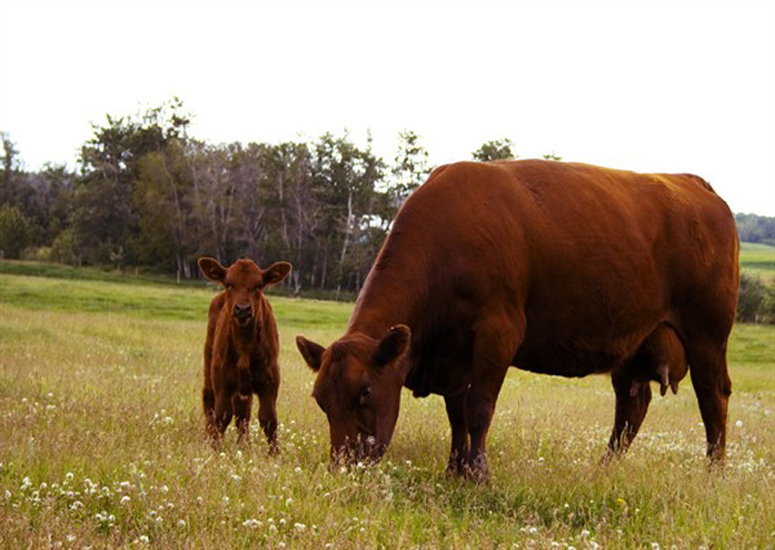
Agricultural News
Sorting Cows for More Efficient Winter Supplemental Feeding
Wed, 02 Nov 2011 16:34:59 CDT
 Cow calf producers in the Southern Plains are searching for every management strategy that will improve the efficiency of the feeding program for their cow herds. According to Dr. Glenn Selk, Oklahoma State University Emeritus Extension Animal Scientist, drought-shortened pastures and reduced and/or expensive hay supplies mean that feed wastage must be eliminated. Putting just the right amount of forage and supplement in front of the cows according to their needs will be most important this winter.
Cow calf producers in the Southern Plains are searching for every management strategy that will improve the efficiency of the feeding program for their cow herds. According to Dr. Glenn Selk, Oklahoma State University Emeritus Extension Animal Scientist, drought-shortened pastures and reduced and/or expensive hay supplies mean that feed wastage must be eliminated. Putting just the right amount of forage and supplement in front of the cows according to their needs will be most important this winter.
First calf heifers have historically been the toughest females on the ranch to get rebred. They are being asked to continue to grow, produce milk, repair the reproductive tract, and have enough stored body energy (fat) to return to heat cycles in a short time frame. Two-year old cows must fill all of these energy demands at a time when their mouth is going through the transition from baby teeth to adult teeth.
If these young cows are pastured with the larger, older cows in the herd, they very likely will be pushed aside when the supplements are being fed in the bunk or on the ground. The result of these adverse conditions for young cows very often is a lack of feed intake and lowered body condition. Of course, lowered body condition in turn results in delayed return to heat cycles and a later calf crop or smaller calf crop the following year.
North Dakota State University data of commercial cow herds recorded over a 21 year period illustrated the differences in size and body condition of very young cows and the very mature (10 year old+) cows. The North Dakota data clearly showed that the average 2 year old is about 20% smaller than her full grown herd mates. There is little wonder that the younger cows get pushed away from feed bunks, hay racks, or supplements fed on the ground. The results of the size differences and the need to continue to grow are manifest in the lower body condition scores noted in the very young cows. The very old cows are experiencing decline in dental soundness that make it difficult for them to maintain feed intake and therefore body condition. Over the 21 year data set from North Dakota, the 2-year old cows and the 11 year-old and older were significantly lower (0.3 or more units) in body condition score than middle-age cows.
Consequently, it makes sense to sort very young cows with the very old cows (if not already culled) and provide them with a better opportunity to compete for the feed supplies. By doing so, the rancher can improve the re-breeding percentages in the young cows and keep the very old cows from becoming too thin before culling time. From this data they formulated three logical groups of cows to be pastured together for feeding efficiency:
Group 1: The two-year old first calf heifers. They have higher nutrient needs than other cows that are not growing. They are too small to compete with larger, older, boss cows for the supplement.
Group 2: The old cows (10 years and older) and the 2nd calf heifers. In addition, this group should include any of the middle aged cows that were thin and needed extra supplement. Cows that were Body Condition Score 4 or less would be considered.
Group 3: The remaining cow herd. This is the group that is mature in size and in adequate condition to enter the winter feeding period as at least Body Condition Score 5.
If only two groups are possible, putting groups 1 and 2 together would be the logical other combination. Ranchers, then want to be certain that the feeding program is adequate to have cows in each group calve as BCS 5 or 6 next spring.
Our thanks to Dr. Glenn Selk for providing this article over supplemental feeding in winter months. This article was part of the Cow-Calf Corner Newsletter which is sent out by Dr. Selk and Dr. Derrell Peel on most Mondays.
WebReadyTM Powered by WireReady® NSI
Top Agricultural News
More Headlines...




















